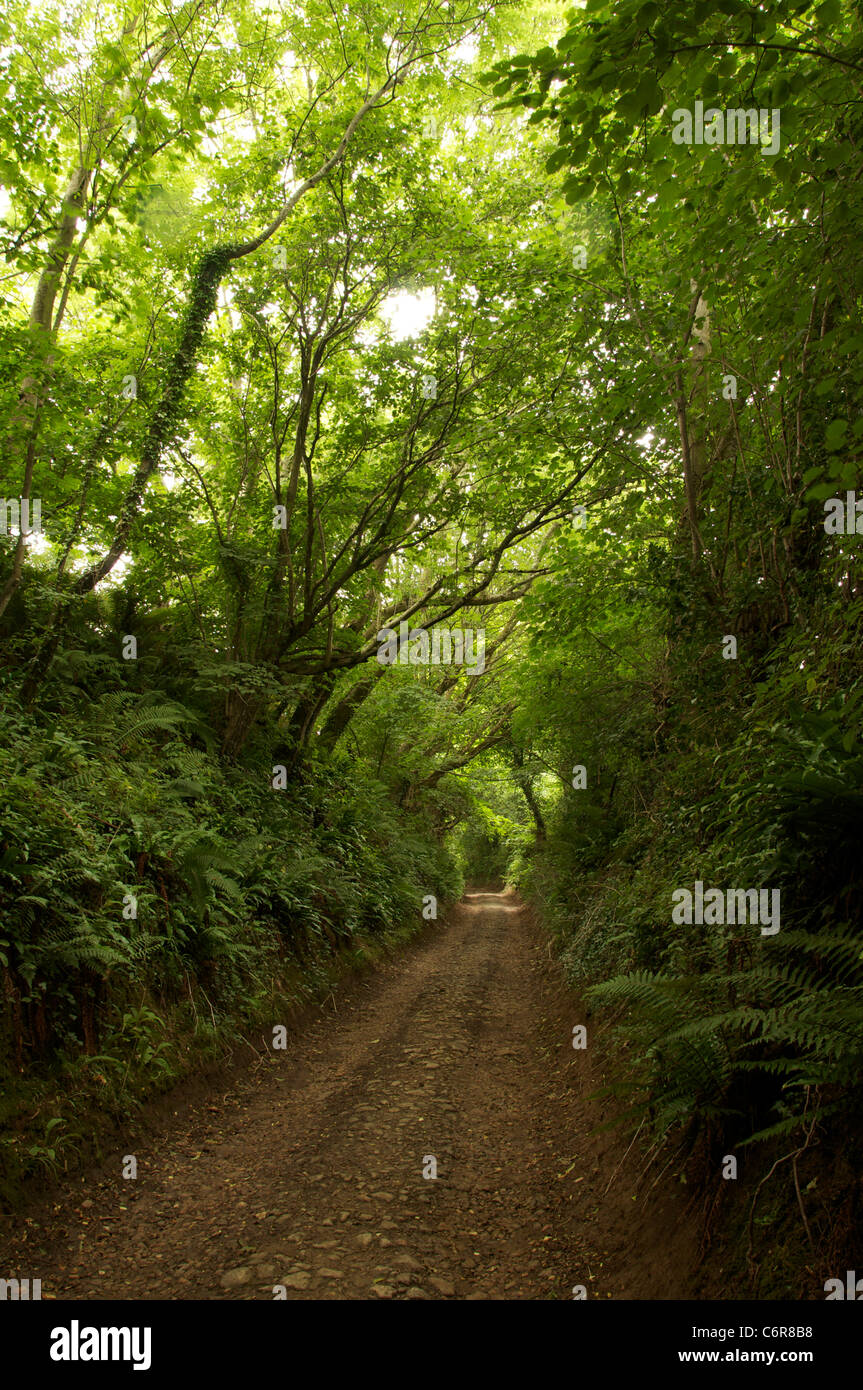An ancient Holloway shaded by trees. A sunken lane eroded deeper over centuries by the footsteps of travellers and their animals. Dorset, England, UK.

Image details
Contributor:
Andrew Wood / Alamy Stock PhotoImage ID:
C6R8B8File size:
34.9 MB (2.8 MB Compressed download)Releases:
Model - no | Property - noDo I need a release?Dimensions:
2848 x 4287 px | 24.1 x 36.3 cm | 9.5 x 14.3 inches | 300dpiDate taken:
7 September 2010Location:
Shutes Lane, Symondsbury, Bridport, Dorset, England, United Kingdom, UK, Great Britain, GB.More information:
HOLLOWAYS: from the Anglo-Saxon hola weg, meaning a “harrowed path, ” a “sunken road.” A route that centuries of use have eroded down into the bedrock, so that it is recessed beneath the level of the surrounding landscape. Most holloways will have started out as drove roads, paths to market. Some as Saxon or pre-Saxon boundary ditches.The oldest holloways date back to the early Iron Age. None is younger than three hundred years old. Over the course of centuries, the passage of cart wheels, hooves, and feet wore away at the floor of these roads, grooving ruts into the exposed stone. As the roads deepened, they became natural waterways. Rain drained into and down them; storms turned them into temporary rivers, sluicing away the loose rock debris and cutting the roads still further below the meadows and the fields. Trodden by innumerable feet, cut by innumerable wheels, they are the records of journeys to market, to worship, to sea. They go by different names in different regions—bostels, grundles, shutes—but they are most usually known as holloways. The ancient landscape of Dorset is rich in holloways, leaving the coast and moving northward, uphill and inland, cutting into the Jurassic Lias, the Permian sandstones and mudstones, the oolites and the chalks of the region. Along these routes dray horses, carts, and carriages would have moved to and from the harbours and bays, supplying and emptying the incoming ships.